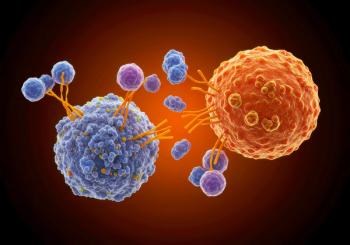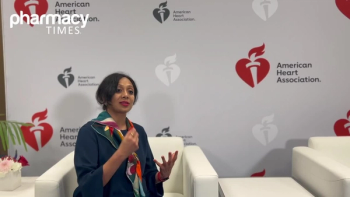
Cancer Vaccine Trials With Canines May Benefit Cancer Prevention in Humans
The clinical trial success in canines may have broader implications for applicability.
Right now, a first-of-its-kind vaccine for the prevention of cancer in dogs is entering efficacy testing. After 4 years of clinical trials that have all pointed to the vaccine’s capability to stop cancer before it starts, investigators are looking forward to proving it works as intended. That excitement is not only because positive efficacy testing could help investigators protect canines against cancers of all kinds, but it’s also because those same results may lay the groundwork for a similar vaccine in humans. For the approximately 1.9 million Americans who could be diagnosed with cancer this year and the more than 600,000 who may die from it, it’s a lifeline most of us never dreamed would come.
Launched in 2019, the 5-year Vaccination Against Canine Cancer Study (VACCS) is the largest and most ambitious canine cancer vaccine study ever conducted. Among the vaccines being tested in the VACCS trial is a cancerpreventive vaccine (Calviri) that contains 31 antigens from 8 common canine cancers. The vaccine has already been through 4 years of double-blind clinical trials, involving 800 healthy pets who were enrolled in the program by their pet parents. In 2020 and 2022, the study was reviewed by an independent Data Safety Monitoring Board that determined the vaccine produced no adverse events, giving investigators the green light to move forward to efficacy testing.
A Successful Canine Vaccine Could Lead to a Human Clinical Trial
The canine genome is closely related to the human genome (94% genetically identical), and their diseases (eg, cancer) are nearly identical as well.1 This means that some of the components of the canine vaccine could be used in the human vaccine to help get the clinical trials started sooner. The results of the safety and efficacy testing can also provide investigators with a starting point to understand how humans might react to the vaccine.
However, a human clinical trial won’t happen quite like the canine trial, which started off large to immediately test safety and efficacy. In a human clinical trial, it’s more likely that the team will first complete a trial for stage I cancer treatment, then progress to a phase 1 clinical trial to test safety in those without cancer. If the vaccine is found to be safe, it would then be expanded to include more patients to assess its overall efficacy. Importantly, human clinical trials will also likely include a diagnostic to screen patients before enrolling them in the trial to ensure they are free of latent cancer, then again at predetermined intervals to detect any cancers that may arise during the trial.
Although it may sound like a human clinical trial for the preventive pancancer vaccine will be more complicated or more difficult, this isn’t the case. Even though there are more precedents for running large human clinical trials, immunology monitoring—a critical component of this trial—is better established in humans than in dogs, and gathering the data is also a simpler process.
But perhaps the major differences in moving to human clinical trials are the timescale and the cost. Although the canine clinical trial has seen marked results in just 4 years, a human clinical trial will likely have to enroll many more participants to see results as quickly. This is because dog tumors grow at a rate of 3 to 5 times faster than those in humans. Therefore, to see a difference in the human clinical trial, there’s a longer wait and the trial must be much larger with the participants monitored for the early detection of cancer. This means the cost of the human clinical trial will be between at least 5 and 10 times that of the canine trial. Ultimately, the most important results from both the canine clinical trials and the human clinical trials are proof that this type of vaccine, and this particular vaccine, are safe and effective.
Despite the positive results so far from the clinical trials for the canine preventive pancancer vaccine, canine pharma hasn’t picked it up for development, and support hasn’t been quickly growing for the human version either. But that’s not stopping the investigators who are determined to bring the vaccines to market themselves if necessary. And we’re not the only ones. There are other investigators out there who are also working toward a vaccine for cancer. It’s going to happen with or without Big Pharma, though without will be far more difficult.
In the meantime, investigators are also working toward 2 additional human clinical trials for therapeutic cancer vaccines for renal medullary carcinoma—a rare type of kidney cancer that mostly impacts young African men with sickle cell trait—and for the pediatric brain cancer, neurofibromatosis. However, just treating cancer once it’s found isn’t enough, which is why our investigators are also working on improved diagnostics for the early detection of stage I breast cancer and colorectal cancer, as well as immune checkpoint inhibitor response and adverse events predictors for multiple cancers, including lung cancer.2
The team also continues to work on other research regarding cancer and diseases in dogs, including a therapeutic vaccine for dog hemangiosarcoma, which is a fast-growing cancer that is often found too late. With every trial, investigators are learning more about the similarities between the human genome and the dog genome and have the opportunity to learn more faster than would be possible in human studies alone. The end of cancer is coming, and we’re bringing our dogs with us.
References
1. Ang C. How genetically similar are we to other life forms? Visual Capitalist. September 7, 2021. Accessed September 6, 2023. https://www.visualcapitalist.com/comparing-genetic-similarities-of-various-life-forms/
2. Shen L, Brown J, Johnston SA, Altan M, Sykes KF. Predicting response and toxicity to immune checkpoint inhibitors in lung cancer using antibodies to frameshift neoantigens. J Transl Med. (2023)21(1):338. doi:10.1186/s12967-023-04172-w
About the Authors
Stephen Albert Johnston is the CEO of Calviri.
Amy Carissa Oliver, CPM, FRAS, is an independent science researcher.
Newsletter
Stay informed on drug updates, treatment guidelines, and pharmacy practice trends—subscribe to Pharmacy Times for weekly clinical insights.















































































































































































































